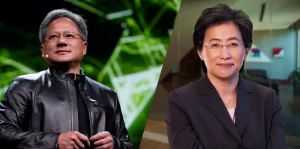Introduction
In the ever-evolving landscape of global technology, the China’s semiconductor industry stands as a crucial battleground, with nations vying for dominance in chip manufacturing and innovation.China, in particular, has been striving for self-sufficiency in semiconductor production, facing challenges from export restrictions imposed by the United States.
A recent article from the Financial Times sheds light on China’s continued efforts to advance its semiconductor capabilities despite these hurdles.
The article highlights the progress made by China’s largest chipmaker, SMIC (Semiconductor Manufacturing International Corporation), in collaboration with technology giant Huawei. Despite US efforts to restrict the development of advanced technologies, SMIC is pushing forward with plans to mass-produce next-generation smartphone processors as early as this year. This move underscores China’s determination to achieve chip self-sufficiency, even in the face of stringent export controls.
Key Points:
Investments in Semiconductor Infrastructure:
SMIC has established new semiconductor production lines in Shanghai to facilitate the mass production of chips designed by Huawei. This initiative aligns with China’s strategic goal of reducing dependence on foreign chip suppliers and enhancing its domestic semiconductor capabilities.
Advancements in Chip Technology:
Despite being a generation behind the cutting-edge 3nm chips, SMIC aims to produce more-miniaturized 5-nanometer chips using its existing stock of US and Dutch-made equipment. These chips, designed by Huawei’s HiSilicon unit, are destined for new versions of premium smartphones, demonstrating China’s gradual progress in semiconductor manufacturing.
Huawei’s Role in Semiconductor Innovation:
Huawei has been at the forefront of semiconductor innovation, with its Mate 60 Pro smartphone featuring a 7nm processor, which garnered significant attention and consumer demand. Moreover, Huawei’s Ascend 920, its most powerful artificial intelligence processor, is slated to be produced at 5nm by SMIC, narrowing the gap between China’s AI chips and global competitors like Nvidia.
Read More: How Llama 3 is Pioneering the Dawn of Artificial General Intelligence – techovedas
Challenges and Costs:
Despite progress, SMIC faces challenges such as higher production costs and lower yields compared to industry leaders like TSMC (Taiwan Semiconductor Manufacturing Company). The article mentions that SMIC charges 40 to 50 percent more for products from its 5nm and 7nm fabrication nodes compared to TSMC, while its yield is less than one-third of TSMC’s. This underscores the financial and operational hurdles in China’s quest for semiconductor self-sufficiency.
Impact of Export Restrictions:
The article emphasizes the impact of US export restrictions on China’s semiconductor industry, particularly in limiting access to advanced chipmaking equipment. The Dutch government’s revocation of export licenses for advanced machines from ASML has further constrained SMIC’s production expansion, highlighting the geopolitical tensions surrounding semiconductor technology.
Read More: AI goes Analog: How Analog AI chips are more energy efficient – techovedas
Conclusion:
China’s semiconductor industry continues to march forward despite challenges posed by US export restrictions. SMIC’s efforts to advance chip manufacturing, in collaboration with Huawei, underscore China’s determination to achieve semiconductor self-sufficiency. However, significant hurdles remain, including higher production costs, lower yields, and limited access to advanced chipmaking equipment. The future trajectory of China’s semiconductor industry will depend on its ability to overcome these challenges and maintain momentum in technological innovation.




